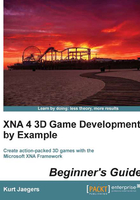
Time for action – heading
- Action 1
- Action 2
- Action 3
Instructions often need some extra explanation so that they make sense, so they are followed with:
What just happened?
This heading explains the working of tasks or instructions that you have just completed.
You will also find some other learning aids in the book, including:
Pop quiz – heading
These are short multiple-choice questions intended to help you test your own understanding.
Have a go hero – heading
These practical challenges give you ideas for experimenting with what you have learned.
You will also find a number of styles of text that distinguish between different kinds of information. Here are some examples of these styles, and an explanation of their meaning.
Code words in text are shown as follows: " You may notice that we used the Unix command rm to remove the Drush directory rather than the DOS del command."
A block of code is set as follows:
# * Fine Tuning # key_buffer = 16M key_buffer_size = 32M max_allowed_packet = 16M thread_stack = 512K thread_cache_size = 8 max_connections = 300
When we wish to draw your attention to a particular part of a code block, the relevant lines or items are set in bold:
# * Fine Tuning
#
key_buffer = 16M
key_buffer_size = 32M
max_allowed_packet = 16M
thread_stack = 512K
thread_cache_size = 8
max_connections = 300
Any command-line input or output is written as follows:
cd /ProgramData/Propeople rm -r Drush git clone --branch master http://git.drupal.org/project/drush.git
New terms and important words are shown in bold. Words that you see on the screen, in menus or dialog boxes for example, appear in the text like this: "On the Select Destination Location screen, click on Next to accept the default destination.".